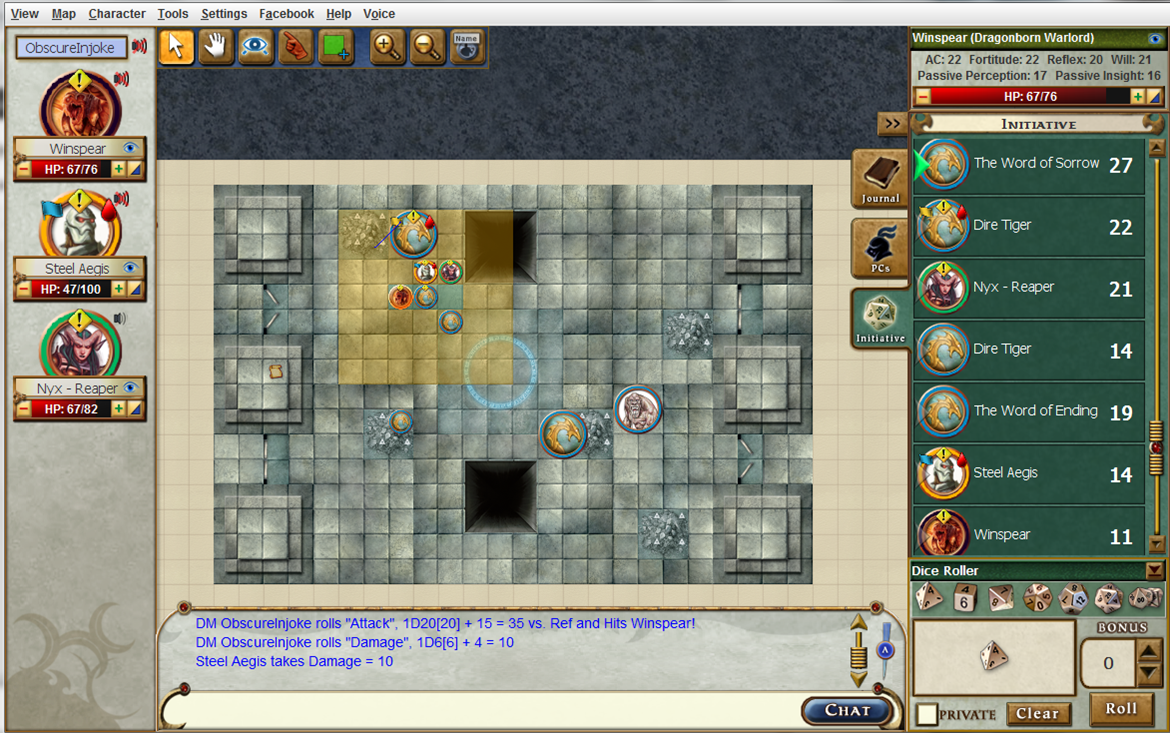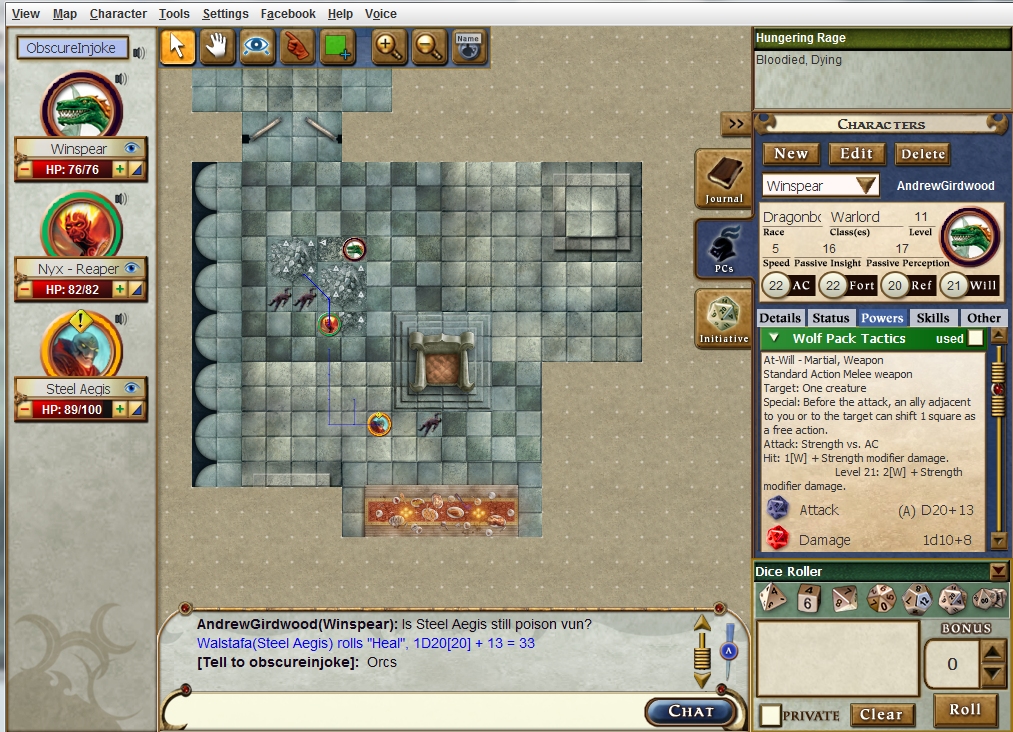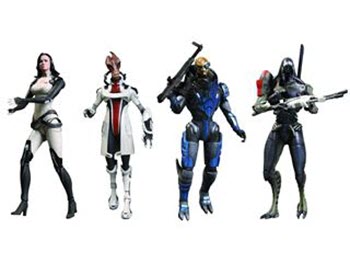Wizards of the Coast have a new virtual table for their D&DI subscribers. It’s in beta. If you’re not a D&DI subscriber then a friend who is can get you a beta invite code to use for a while.
This is a review of a still in beta product.
Technology has been a problem for Wizards in general. I bet they wish a genie had told them about HTML 5 some years ago. You need an up to date version of Java for the virtual table beta and this means you’re out of luck if your gaming group has started bringing tablets to the table. My D&D group brings a range of laptops; the lowest being a little netbook that copes with the system demands of the virtual desktop. Just about.

This virtual desktop is a simplified version of previous attempts but it still packs some punches. The voice technology, I think, in particularly impressive. The client supports game table banter that will allow D&D games to be played by gamers all across the world. I think the “female to male” voice modulator needs some work, although it’s still pretty good (if American), and my hope is that it’ll make the virtual experience more comfortable for girl gamers who want a cautious start. The demon voice modulator is there for evil DMs.
Given that the virtual table supports voice chat and does so if a fairly robust way – I think this is a solution for people wishing to engage in traditional roleplaying but do it online.
I was not the DM for this playtest. It goes without saying that DMs need to put extra effort in and be far better practised at the system than players. However, two things that I noted our DM enjoyed (other than the ability to mute certain players) was to prepare maps ahead of time and slowly reveal them as the characters explored and the ability to swap in maps within seconds. At one point our characters vanished from one realm (or perhaps it was a dream) and appeared in another – the effect was wonderfully boosted by the map flickering from one scene to another on our screens.
As a player I found it straight forward to import a character from Character Builder to the Virtual Table. It didn’t take me long just to close the Character Builder as I found it easier tracking stats and looking up powers on the Virtual Table. You should be aware that players can view the stats of other characters in their group. For us that was helpful as we could mull over tactical options together.
Players can drag their own tokens around the board. If you move your token one square at a time then it leaves a path trail to show the squares moved. An option players have is to show the path taken by a monster token when it moves. That’s pretty useful. The DM can allow players the ability o move other tokens to – we had that turned on when using powers that allowed us to shuffle the positions of enemies around during melee.
Map tiles are basic but effective. DMs are not restricted to “fuzzy felt shapes” and have enough options, already in this beta phase, to suggest many scenarios. The expectation is that either import options will become available or Wizards will greatly grow the library of scenery.
One of the most simple but most effective abilities of the virtual table is that you can tag tokens with effects – if a character/monster is taking damage, blooded, etc, then that’s marked on the token. Hovering over the token reveals the markers or selecting it and checking the status screen in the top left also reveals these public notes.
The “line of sight” tool makes it easy to see whether tokens are in line of sight of one another and counts the distance between tokens. Handy.
The virtual table does much of the counting for you but not all of it. I found that it had the balance about right – but wished it was more clear which bonuses had already been calculated. The fact that the heavy lifting was done really did speed up our game play and allowed for more action and dice rolling. I’m not saying that virtual table is just a combat enabler – just that it assists in combat and other die heavy situations.
Players and DMs can select the hand tool – coloured to match their token – and use it to point to the virtual table. Even though we were all in the same room for this play test I found this encouraged us to point at the virtual table more often. It was also used to indicate where PCs were looking while the “spotlight” was elsewhere.
This beta version of Virtual Table is a success. It may not look like much but that’s not the point – the point is that the system is easy to use and is a powerful enabler. Hopefully Wizards of the Coast can use it build a loyal online community and make it work with D&D Next.

